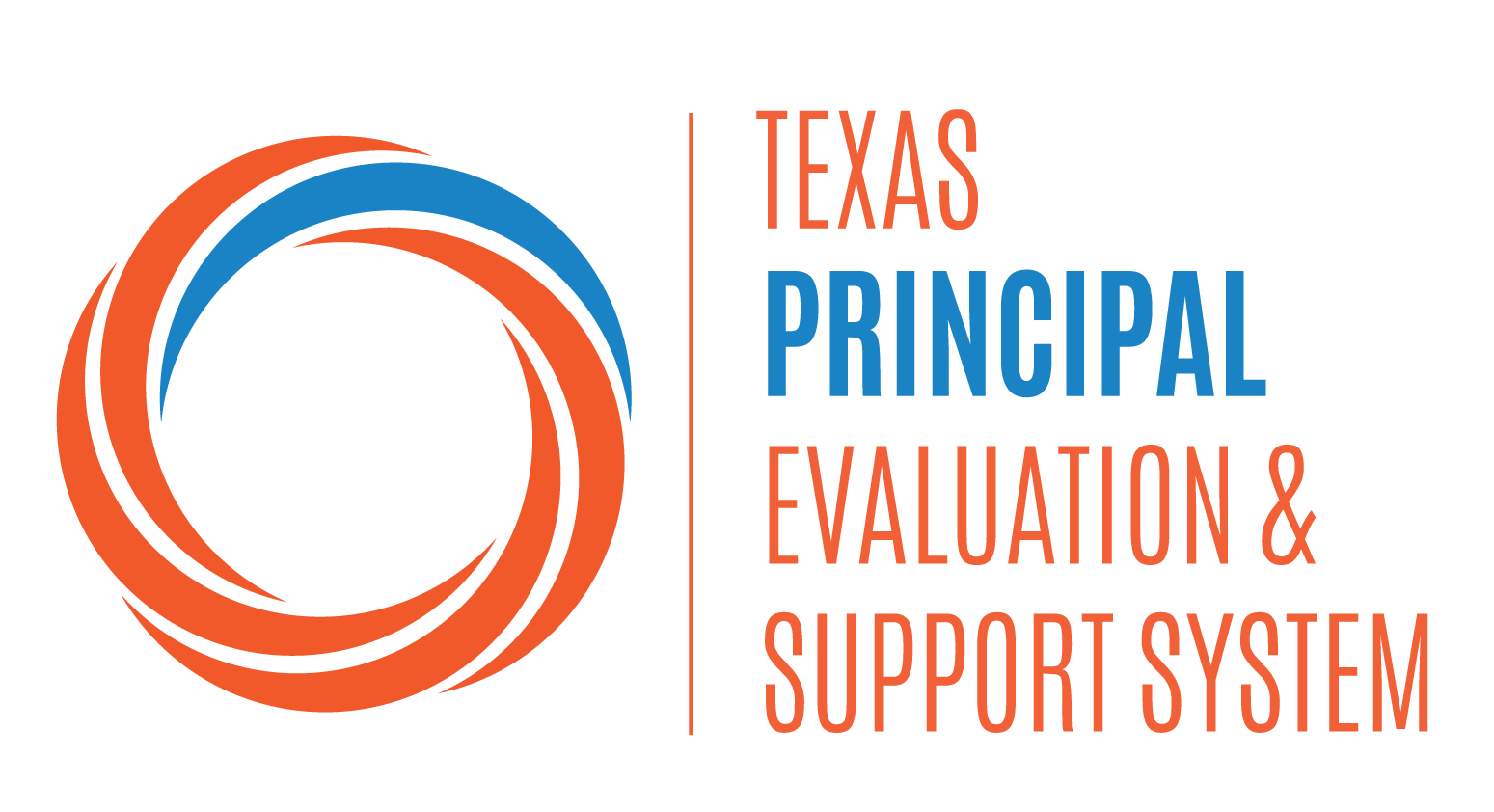Evaluation Process
The T-PESS process incorporates a series of actions and activities that should be applied on an ongoing basis. While the T-PESS process results in your annual summary assessment, it's better to think of it as an annual process of activities that help you self-assess, establish performance goals, collect and analyze information, and provide constructive feedback, improving your quality and effectiveness as the school leader.
Orientation
At the beginning of each year, an orientation is conducted with all principals to clarify the T-PESS rubric, along with the district's expectations for practice and performance, timelines, materials, forms, and any additional rollout information. The orientation is an important step in the process, because it:
- provides the appraiser and principal with concise and accurate information regarding T-PESS, including the actions embedded in the rubric;
- ensures that the appraiser and principal understand individual roles and responsibilities;
- details the T-PESS process and provides specific timelines for when required activities are due;
- communicates any regulations and policies that govern principal evaluations; and
- clarifies how performance will be measured. Resources are provided for appraisers to conduct this orientation, including the option to revise the presentation in accordance with local protocols.
Self-Assessment and Goal Setting
Using the Texas Principal Standards, TPESS Rubric, T-PESS Principal Guide, and data sources such as the campus needs assessment, campus improvement plan, district strategies and priorities, student and staff outcome data, and past feedback from peers and appraisers, the principal completes a data-driven self-assessment to identify the variances between actual and expected competence and performance. Begin with the "Developing" performance descriptors and move left towards the "Distinguished" column. The descriptors in the rubric clarify expected knowledge and skills and should be used to identify those actions and practices that are consistently performed at expected levels and those that require growth or present challenges. The principal should gain a clear idea of the highest-priority areas on which to base growth goals.
During initial implementation of the T-PESS rubric, principals use the self-assessment to identify professional growth goals which will strengthen leadership practices and student outcomes. It is essential that the goal-setting process prioritizes areas of development for the principal as a professional, independent of campus-related needs. Therefore, the primary goal is focused on the principal's individual growth, while a second goal must be developed to address student growth on the campus. Although principals may choose to establish more than two goals, doing so is not required, and any additional goals should be considered carefully, so they do not to divert energies from the two required goals. In the second year and beyond, principals may use summative refinement areas and additional data to establish growth goals and revisit them at the beginning of the school year.
Beginning-of-Year Goal Setting/Refinement Conference
During this conference, the appraiser and principal discuss the self-assessment results, school and district priorities and plans, and any data or artifacts that proved useful in determining the growth goals. Once the goals have been established, it is important to discuss and agree on the data, evidence, and documentation that will be collected throughout the year in support of the goals, how periodic reviews and support will be conducted, and the criteria for success. This discussion may also include a review of the current context of the school and previous practice, as applicable.
School Site Visits / Informal Assessment
Ongoing school visits are conducted to observe the campus environment, interact with the school community, gather evidence, coach, and provide actionable feedback regarding performance and practices in various contexts and settings. Increased frequency of those visits provides a comprehensive perspective on trends, patterns, and the extent of evidence. Those visits also provide an opportunity for the appraiser and principal to discuss strengths and challenges with the T-PESS process and practices.
Mid-Year Conference
When ongoing school visits are conducted, the mid-year conference then provides a platform to focus on the status of the goals and whether adjustments in actions need to occur to accomplish the goals. This midyear checkpoint is also used to formatively assess performance and practices using the T-PESS rubric. As a result of this meeting, the appraiser and principal should have a clear understanding of the principal's current level of practice, the performance trajectory with rubric ratings, and actionable next steps to leverage leadership practices. The Mid-Year Conference is an extension of the ongoing dialogue between the appraiser and principal.
Identify and Collect Artifacts and Evidence
Because T-PESS is an evidence based process, it is imperative that the appraiser and principal must collect and prioritize evidence throughout the year. Each indicator of the T-PESS rubric provides numerous examples of artifacts and evidence. The appraiser should be intentional about conducting school site visits to collect pertinent evidence, including the impact on systems, processes, teacher performance, student outcomes, and including the implications on the larger system.
Principals and appraisers synthesize their collected artifacts and evidence, to create a comprehensive view of the principal's performance throughout the year. This brief summary is not intended as a portfolio, but rather a concise review of information that may be used as consideration for performance and ratings during the end-of-year conference. T-PESS evidence is collected using four comprehensive strategies:
- Purposeful observations and walk-throughs tied to principal practices.
- Ongoing and purposeful data collection tied to the systems and processes within the campus.
- Artifacts and/or evidence tied to the domains, indicators, and descriptors in the rubric.
- Other performance data regarding the campus and its operational systems and processes, staff, students, and parent/community stakeholders.
End-Of-Year Conference and Goal Setting
The appraiser and principal review artifacts and evidence that was collected throughout the year and map the evidence to the goals and rubric. The artifacts and evidence inform goal attainment, and, with the principal's input, decisions are made about final performance ratings using a preponderance of evidence. That information is further used to project and establish draft performance goals and performance refinements for the next school year as a cycle of continuous improvement. To finalize the annual process, the appraiser takes into consideration the information shared during the End of- Year Conference, along with evidence collected throughout the year, to complete the T-PESS Summary Rating and Goal Attainment Form. Pursuant to local procedures, both the appraiser and principal sign and submit the required forms.
Note: Districts have multiple options when determining End-of-Year ratings. Ratings may be reported separately for each indicator of the T-PESS rubric and for each individual goal. If so, the weights below are not applicable.
For districts that opt to provide principals with an overall summative rating, the weights in the table below indicate how T-PESS components should be calculated based on a principal's tenure on a campus. This phase-in process acknowledges that leadership impact is not fully assessed until the third year of a principal's tenure on a campus. At that time, the principal has full ownership of student growth or progress results from that year onward.







